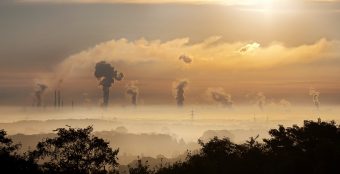
Air quality in the Indian holy city of Varanasi is “the most toxic in the country” according to research that reveals the extent of the pollution crisis across northern India.
There has been a growing awareness of the dangers of the smog that envelopes Delhi in the winter months, but a report released on Monday by three environmental groups highlights the extent of the problem across the north Indian plains, where levels of harmful airborne particles are routinely higher than in the capital.
According to 2015 data from the Central Pollution Control Board (CPCB), Varanasi and Allahabad, both located in India’s largest and most populous state, Uttar Pradesh, did not record a single day of “good” air quality in the more than 220 days that measurements were taken.
“Good” air indicates an Air Quality Index score below 50. Anything above 100 – “moderate” – is considered to be dangerous for children, the elderly and people with respiratory conditions.
The report’s lead author, Aishwarya Madineni, said the levels recorded in Varanasi appeared to regularly breach 150, when the air is classified as “unhealthy” and begins to affect the general population.
The researchers found that levels of airborne pollution in Varanasi finer than 2.5 micro-metres – the most harmful variety because they can reach deep into the lungs and breach the blood-brain barrier – were routinely double the safe limit in October and November 2015.
Levels of coarser particles finer than 10 micro-metres were triple the safe limit in 2016 and had increased by more than one-third since 2010, the research showed.
A 2016 World Health Organisation study found that half of the world’s 20 most polluted cities were in India, starting with Gwalior in Madhya Pradesh.
Allahabad and Delhi were also listed as suffering from toxic levels of fine pollution in the WHO report but Varanasi was not measured.
The spiritual capital, which draws hundreds of thousands of Hindu pilgrims to the banks of the Ganges river each year, had just one monitoring station capable of measuring the finest pollution particles, and even that station had “huge gaps in the data”, Madineni said.
The pollution’s cause in Varanasi is much the same as in Delhi: a mix of dust kicked up by traffic and construction sites, vehicular and industrial emissions, smoke from private diesel generators and open fires lit by poorer residents.
Uttar Pradesh is also home to at least 18 coal-fired power stations, the emissions from which can travel hundreds of kilometres and diminish air quality across the region.
Among six cities in Uttar Pradesh highlighted in the report, only two – Kanpur and Agra – had more than 12 “good” air quality days each year. Child specialists cited in the report said there had been an eight-fold rise in respiratory illnesses in Varanasi and the degrading air quality seen as the main cause.
Rates of asthma and patients reporting breathlessness in the city had also increased by up to 25%, according to R N Vajpayee, a pulmonologist and chest physician cited in the study.
Air quality in Delhi fell to its lowest levels in 17 years in the past three months, leading to emergency shutdowns of power stations, construction sites and schools. A 2015 study has shown that about half the capital’s 4.4 million schoolchildren have had their lung capacity permanently compromised because of the pollution.
Source: theguardian.com


